How can trading platforms support hybrid working?
The COVID-19 pandemic transformed millions of people into home workers overnight. The challenges for individuals and organizations were enormous but were largely overcome. Now, three years after the first wave of lockdowns, many workers have not returned to the office full-time. Hybrid working, where employees split their time between home and office spaces, has become widespread. Technology has been the key factor in enabling this shift, from video conferencing apps, to secure connectivity. But challenges remain, especially for workers in financial markets. Just as workers have become adept at delivering from anywhere, trading tools need to enable productivity wherever they are used.
The shift to flexible working
COVID lockdowns were a watershed moment, where working from home became almost universal. But in some ways, this was simply an acceleration of a process that had been going on for many years. Technological developments had already given remote workers the potential to be as productive as their office-bound colleagues. Nonetheless, pre-pandemic there was widespread skepticism from employers that the challenges of home working could ever truly be overcome.
In this sense, the pandemic redefined what was considered possible. Whole sectors of the economy were forced to switch to home working and there was no alternative but to address any issues that arose. And in general, the experience was remarkably successful. So much so, that even in 2023 some degree of home working remains the norm. For example, the UK Office of National Statistics recently reported over 70% of professionals were working at home for at least part of the average week.
For financial markets firms, hybrid working seems to be the ‘new normal’. The major barriers to this have disappeared. Firms are confident that workers can access documents, talk to their colleagues, and fulfill their responsibilities, wherever they choose to work. Some frictions remain, however. Home computer setups generally struggle to match the sophistication of the average office workstation, especially for financial markets professionals. When workers do come into the office, they are increasingly likely to use a generic hot-desk, rather than having their own customized space. How can a trading application help to mitigate the many minor frustrations of the hybrid working world?
Challenges and solutions for hybrid working in financial markets
Financial markets professionals have complex requirements that present major challenges for hybrid working. The stereotypical trader or broker workstation is an information-rich environment, with multiple monitors displaying a vast range of market data. The average home setup has far less screen real-estate, and legacy trading applications can struggle to cope with this. Many home workers will be familiar with the experience of finding a vital window has disappeared offscreen. It may seem a relatively minor issue, but familiarity with your workspace is crucial to maintaining productivity when working remotely.
What does a trading platform need to deliver in the age of hybrid working? An intuitive screen setup process is crucial. This allows users to configure their application in exactly the way they need it, wherever they happen to be working from. Workspaces should also be stored in a secure and centrally accessible server. This can enhance productivity in various ways. For example, users might create separate ‘home’ and ‘office’ layouts, customized to the amount of available screen space. Each desk could also create shared layouts, which individual users can then customize as needed.
Software can empower hybrid workers in other ways. Legacy trading applications generally display static views of the market, with limited scope to modify what data is shown. For example, a traditional application would have separate windows for each stage of the order lifecycle (new orders, working orders, booked orders, and so on). Fine when you have four monitors available, a nightmare when working from a laptop! But an application that provides rapid, single-click filtering and responsive order searching can deliver multiple views within a single window.
Likewise, a modern, flexible user interface should allow users to create multi-function components, like drop-down menu buttons, or consolidated alert windows. These can be an invaluable way to deliver the same amount of functionality in a smaller space. Ultimately, users need to be able clear away the ‘noise’ and focus on what’s most important. And there are many ways of enabling this – for example, allowing users to create custom order tags, which they can then use for searching and filtering.
Conclusion
The ability to support hybrid working is not a traditional selling point for a trading platform. But there are many ways that software can empower hybrid workers, by delivering a more flexible and responsive user experience. It seems that some degree of remote working is going to be the default for most people in the industry, and decision makers need to take this into account when choosing what tools to adopt.
ION’s Fidessa Desktop UI for the Fidessa trading platform delivers all the features you need to boost productivity and grow your equities business – wherever you’re working from. Watch the video for more information.
Discover what ION can do for you
Contact us today to find out more about ION’s Fidessa trading platform, and arrange a demo.


